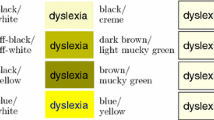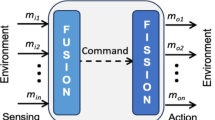Abstract.
“Point and click” interactions remain one of the key features of graphical user interfaces (GUIs). People with motion-impairments, however, can often have difficulty with accurate control of standard pointing devices. This paper discusses work that aims to reveal the nature of these difficulties through analyses that consider the cursor’s path of movement. A range of cursor measures was applied, and a number of them were found to be significant in capturing the differences between able-bodied users and motion-impaired users, as well as the differences between a haptic force feedback condition and a control condition. The cursor measures found in the literature, however, do not make up a comprehensive list, but provide a starting point for analysing cursor movements more completely. Six new cursor characteristics for motion-impaired users are introduced to capture aspects of cursor movement different from those already proposed.
Similar content being viewed by others
Author information
Authors and Affiliations
Additional information
Published online: 6 November 2002
Rights and permissions
About this article
Cite this article
Keates, S., Hwang, F., Langdon, P. et al. The use of cursor measures for motion-impaired computer users . UAIS 2, 18–29 (2002). https://doi.org/10.1007/s10209-002-0033-7
Issue Date:
DOI: https://doi.org/10.1007/s10209-002-0033-7




